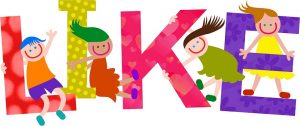
Webster’s dictionary defines a rhyme as the corespondent of sound between words. We as people learn by association. When we are babies we learn our names by hearing the same syllables. The rhythm of the wording attracts us. We then listen to the same thing being directed towards us multiple times a day. Doing so we associate ourselves with the sound of the syllables that catch our attention, and thus our names are embedded upon us.
Learning inside a classroom is no different from the way we learned at home. As the years roll on you notice the way the teacher is evolving, and bringing in new ways to catch the attention of their classroom.
Rhyme
From an early age rhyme, and repetition are incorporated into our lives which help with the learning process. The popular nursery rhymes in fact shaped our education without us realizing it. We knew “Mary“ had a lamb that went to school. We also learned that school was no place for lamb. It was a fun, funny story with a subtle lesson at the end.
Humpty Dumpty
Written in the 1797 in England, this rhyme was theorized that Humpty was king Richard III Of England, and his fall was a defeat of Bosworth Field in 1485. This “real” story with a tragic ending did makeup for another great nursery rhyme which we learned was named “Humpty Dumpty.” He was an egg whom sat on a wall and fell. Kids are introduced eggs before the age of 1, and they are aware of how easy they are to break. So for this big egg named Humpty to sit on a wall and fall you can imagine how the kids just know how hard it would be to put him back together again. Again they are learning by using the rhyme and associating the nursery rhyme with real life.
Uses at home
Parents and teachers alike use this nursery rhyme/ song as they do many others to teach the child about phonics, and logic which helps these preschoolers understand, and expand their minds. At that age being a sponge, and absorbing is what they are great at, and they learn so much more than what is just on paper. They learn compassion from caring that He fell down, and hurt himself. They learn logic from knowing that it is not possible to put an egg back together again, they learn song from rhyming, and sometimes teachers like to add little dances. The kids also learn fine motor skills from trying to put an egg together, realizing it in the end it cannot be done.
Nursery rhymes, and songs have been incorporated more these days into the learning process. These are easy ways to catch the attention of many, and make learning fun. It is a good way to tell if the child is paying attention. Remember repetition is a building block of the learning process which is what our kids could benefit from, to have a successful education years to come.